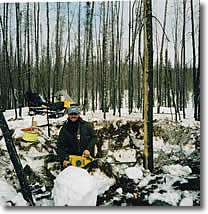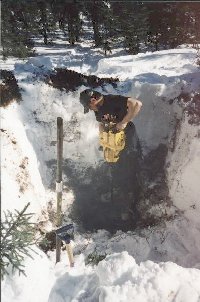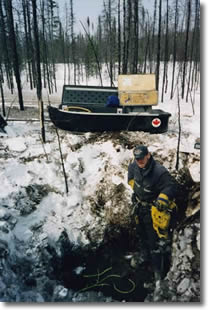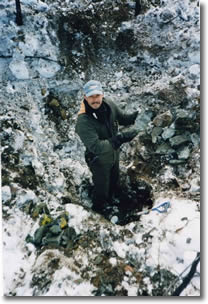Soquem, Canada
![]()
2600 Blvd Laurier
Tour BelleCour, Suite 2500, 5th Floor
Québec (Quebec) Canada GIV 4M6
Phone.: (418) 658-5400 Fax: (418) 658 5459
(TRANSLATION OF THE ORIGINAL FRENCH LETTER)
Québec, March 29, 1999
Mr. Pierre Gaucher
Instrumentation GDD
860, boul. de la Chaudiere
Quebec (Quebec)
G1X 4B7
Dear Sir :
We wish to express our satisfaction towards your geophysical instrument called the Beep Mat BM4+, which is adapted to winter conditions. We also take the opportunity to briefly describe the prospecting method that we chose and that proved to be very successful.
The first step of the prospecting program consisted in compiling data in order to define and give priority to exploration targets for a given region. Those targets were defined from several parameters including :
• Magnetic survey (provincial government);
• Electromagnetic survey (airborne EM Input);
• Geological context;
• Geochemical signature of deposits coming from lakes or creeks;
• Access.
The compilation made us realize that several top-priority targets were located in areas hard to access in the summertime. The winter intervention on snowmobile with the help of the adapted Beep Mat BM4+ and dynamite helped us efficiently prospect those targets at very low costs. The equipment required for a two-person team was :
• 2 snowmobiles;
• 3 Beep Mats BM4+ including 1 adapted to snowmobiles;
• 1 Pionjar drill;
• 1 drill with specially manufactured steels;
• 24 kg of dynamite;
• 2 electronical navigation systems of GPS type.
The field procedure was realized in two steps. The first one consisted in establishing a road access by snowmobile to reach, with the help of GPS, the targets defined by the compilation, then in finding conductive sites with the help of the adapted Beep Mat BM4+. The second step was to go back to these sites with the blasting gear and to sample.
We were quite surprised at the investigation depth of the adapted Beep Mat BM4+. Indeed, we were able to detect conductors under a cover of 5 to 6 feet of snow and 3 feet of overburden. The standard Beep Mat could not have detected those conductors. Thanks to the success obtained with this prospecting program, we plan on doing other interventions on interesting targets in areas that are hard to access in the summertime.
Sincerely yours,
Guy Cuerrier, B. Eng.
Geologue - chef de projet
GC/df
Soquem's Case History - 1999
This case is a good example. A crew of Soquem Inc. used Beep Mats pulled by snowmobiles to inexpensively explain airborne EM conductors on open ground in the north of Quebec.
Guy Cuerrier and his crew checked and explained conductors under a cover of up to 9 feet of snow and overburden. By covering large areas, they were able to sample one massive sulfide for every two days of work.
To do so, they pulled the Beep Mat on snowshoes or behind a snowmobile at a speed of up to 20 km/h, investigating up to 3 meters deep at each tenth of a second. When a conductor was detected, they came back with the equipment in a sleigh to dig and sample it.
On a sunny day of March 1999, Dave Fortin of Soquem Inc., equipped with a Pionjarplugger, is drilling a few holes in semi to massive sulfide conductors found with the Beep Mat under 5 to 6 feet of snow and overburden.
 Guy Cuerrier of Soquem Inc. loading the holes with explosives. |
 |
|
|
|
||
 |
 |
|
|
Cuerrier looking at another conductor about to be blasted. All the equipment is moved fast and easily with the help of a sleigh.. |
Guy Cuerrier of Soquem Inc. smiling at a massive sulfide sample picked up after blasting and ready to be sent for assay.. |













